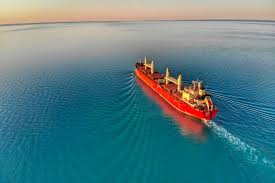
WASailor Blogs

Future Fuels in Shipping
- Mar 17, 2025
Future Fuels in Shipping
Decarbonization has become a buzzword in the shipping industry, with market leaders setting trends in choosing future fuels, hoping others will follow. Since the beginning of the millennium, there has been a push to raise awareness about global warming and the need to limit the planet's temperature rise to 1.5°C. Although the maritime sector contributes only 3% of global greenhouse gas emissions, it plays a crucial role in energy transformation, as 85-90% of world trade is conducted via shipping.
To achieve the International Maritime Organization's (IMO) target of reducing greenhouse gas emissions by 50% from the 2008 baseline, contributions are needed from all parties, including shipowners, charterers, regulators, ports, fuel suppliers, financiers, shipyards, and crew.
The main question for shipowners is which alternative fuel to choose. The straightforward answer is that no single alternative fuel has yet been identified as the best option. Each fuel has its own merits and challenges, and decarbonization will likely need to occur in stages, with some fuels adopted in the short term while the best longterm solution is determined.
Let's explore some of the fuels currently being developed and tested:
LNG
The most widely used alternative fuel, LNG offers 20% more energy than HFO/DO and is familiar to the shipping industry. It reduces CO2 emissions by 25% compared to HFO/DO. However, challenges include storage at -162°C and some expected wastage in the engine.
Methanol
As a liquid fuel at room temperature, methanol requires no special storage arrangements and is easy to handle despite its toxicity. However, it has low energy levels, requiring almost twice the storage volume compared to HFO. Methanol is highly toxic, and its contribution to GHG emission reduction is only 5% compared to HFO/DO.
Ammonia
Ammonia is promising for the future as it meets IMO requirements with no CO2 emissions, over 95% reduction in NOx, sulfur emissions, and particulate matter. The main challenges are its toxicity and containment issues, as ammonia is highly toxic to the crew, and any uncontrolled leakage would be catastrophic. Ammonia has been transported worldwide in ammonia carriers for a long time.
Hydrogen
While hydrogen has been researched extensively for hybrid cars, its use in shipping is limited to small-scale applications like tugs, barges, or supply vessels. Propelling a large vessel with hydrogen is challenging due to storage limitations, as it needs to be carried at -256°C in liquid form. Additionally, its high reactivity poses containment issues.
None of these alternative fuels are as abundantly available worldwide as conventional fuels due to challenges with feedstock, technology, port infrastructure, production costs, and greater emissions during production. In the long term, nuclear-powered commercial vessels could be a solution, with only one-time bunkering required for the vessel's lifetime. However, radiation and exposure hazards pose threats to the crew. Some companies in the Far East are considering nuclear fuel for large container vessels during the new building stage.
With the IMO pushing for a shift to alternative fuels, the EU aiming to increase renewable energy consumption to 45% by 2030, engine makers offering new products for both new builds and retrofits, and the changing political landscape in the USA leading to withdrawal from the Paris agreement of climate change , only time will reveal the best fuel for the future shipping industry!
Mr.T.R.Jayakumar, Chief Engineer
Maritime Instructor-Simulation
Maersk Training,Chennai.
